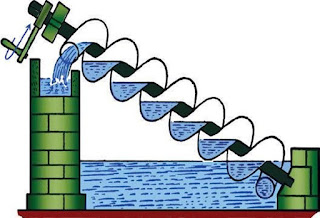The Functionality of the Archimedean Screw
Immerse the lower end of the tube in a liquid, rotate the screw, and each turn scoops up a portion of the liquid. This substance is then lifted along the spiral and expelled at the top, ready to be collected in a reservoir. The rotation can be powered in various ways, including manually using a handle, or by animals, windmill propellers, or even agricultural tractors.
An Ancient Invention with Modern Relevance
While the invention of the Archimedean screw is often credited to Archimedes based on historical accounts, recent research suggests it may predate him. It's believed to have been used for irrigation in the famed Hanging Gardens of Babylon. Archimedes may have encountered the device during his studies in Alexandria, Egypt, and subsequently introduced it to Italy, highlighting the global influence of this Middle Eastern innovation.
Archimedes' research has had a profound impact on the history of science, from antiquity - when his rigorous demonstrations were widely adopted - to the Renaissance, when his works sparked great interest among the pioneers of modern experimental science. For instance, Galileo Galilei referred to Archimedes' screw in his work "The Mechanics," marveling at its ability to continually lift water by descending.
The Enduring Utility of the Archimedean Screw
Even today, the Archimedean screw remains a versatile tool, used to lift substances in solid, liquid, and gaseous states. It's particularly effective in water gradients because it harnesses potential energy while stationary. At its highest point, the water's potential energy peaks, and as it falls to the lowest point, it's channeled into a rotor connected to a generator. This process transforms the kinetic energy - resulting from the movement of the screw - into electrical energy.
The liquid enters the screw's three or four compartments at the highest point, while an electric pulse initiates the motor that sets it in motion. The separate compartments act as individual chambers where incoming water is forced in by gravity, creating a rotational principle. The energy produced by the rotation of the screw shaft is then transmitted via a belt multiplier to a generator. This technology prioritizes the pushing force over speed, offering a reliable and efficient solution for liquid handling.


Please give information about where you got the photo from
ReplyDeletePost a Comment